| The Youth's Companion Perry Mason's Ideal Magic Lantern as a premium for the readers of a widely read American youth magazine. |
|||
 The publisher of the American magazine The Youth's Companion was probably the first to use effectively the device of giving free, or very cheap, products for annual subscriptions. Those 'premiums' were given to new subscribers as well as to old subscribers for renewals. Subscribers could also buy a lot of attractive items: the magazines 'Premium List Number' contained pictures and descriptions of, among other things, Jack knives, camera's, books, conjuring tricks, steam engines, microscopes and watch fobs. One of the most attractive items was of course..... a real magic lantern! In the 1890s subscribers who enlisted two new subscribers received the lantern for 45 cents postage and packing. |
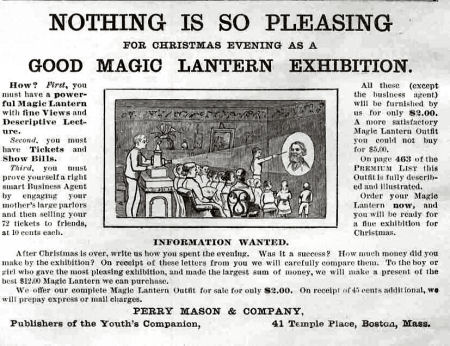 The magazine was published by Perry Mason and owned by Daniel S. Ford (1822-99). |
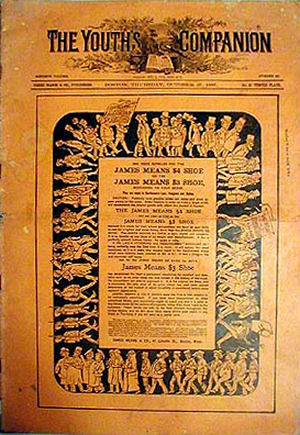 |
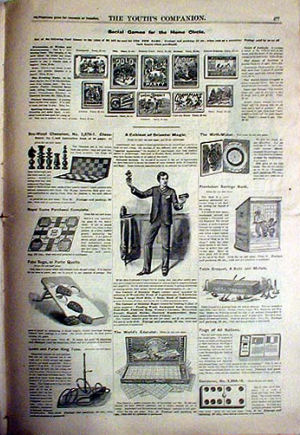 |
October 1887 issue of The Youth's Companion, filled with great promotional drawings and descriptions of premiums that could be bought or earned. These include books, camera's, dolls, tea sets, sporting equipment, tools, microscopes, toys and games, a magic lantern set, magic tricks, musical instruments, clothing, guns and so much more. Forty pages of fascinating details of merchandise and life in the late 1800s. Large magazine measures 11 x 16 inches (28 x 41 cm) and is published by Perry Mason & Co. Publishers of Boston, Mass. |
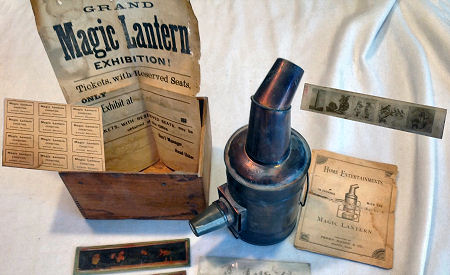 |
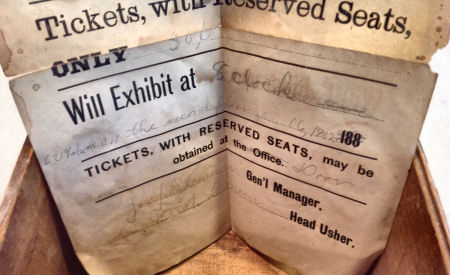 |
 |
|
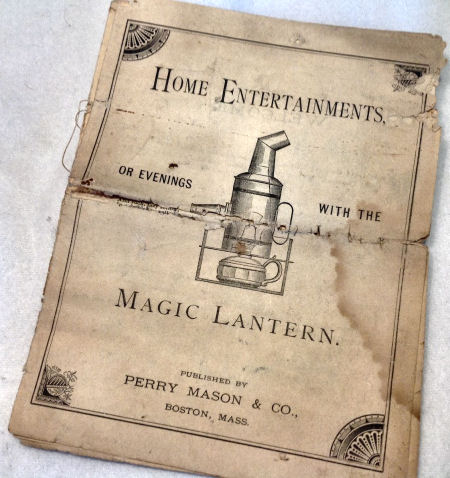 |
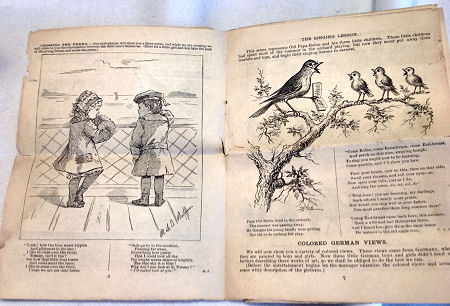 A magic lantern delivered by Perry Mason that differs from the lantern described below. The set is complete with lantern, box, a booklet, slides, and broadside. The cover of the booklet shows how it is set up using the wood box; there are two metal rods included that support the lantern partly in the box. The broadside has a date from 1902 on it but note the year printed on it is 188_. |
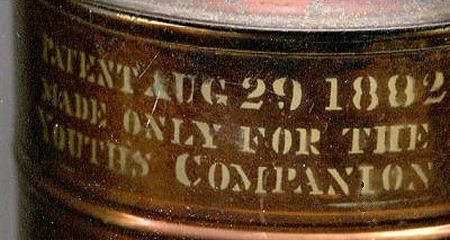 |
Almost all magic
lanterns of Perry Mason have the text 'PAT.AUG.29.82
' (Patent August 29, 1882) in stencil font on the front. The
magic lanterns of this type got the addition '
MADE ONLY FOR THE YOUTH'S COMPANION'. Sometimes the text simply
reads "PATENT APPLIED FOR". These lanterns are made of tin with a copper patina and are provided with a cracked chimney contrary to the designs below that have a chimney shaped as a truncated cone. |
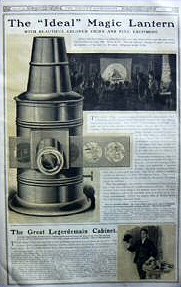 A more widespread design is the 'Ideal' magic lantern, given for one new name and 45 cts additional. |
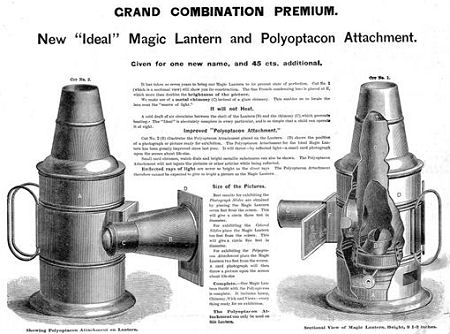 |
 |
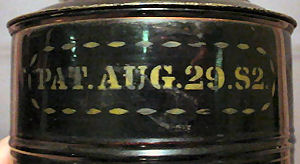 The 'Ideal' magic lantern is approximately 11 inches high with upright cylindrical design. Most lanterns have the text 'PAT.AUG.29.82 ' (Patent August 29, 1882) stencilled on the front. The lantern is made from black painted tin. It measures 9 1/4" tall x 8 1/4" wide and it uses 1 3/4" slides. On the end of the brass knob that controls the wick of the built-in burner is stamped "VENUS E. M. & CO. MADE IN USA". |
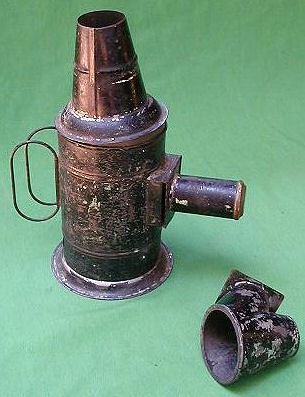
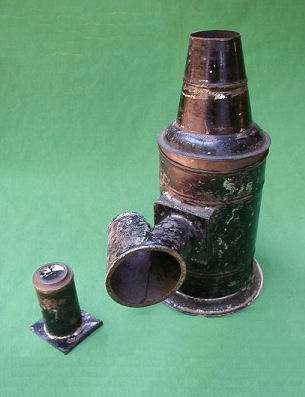
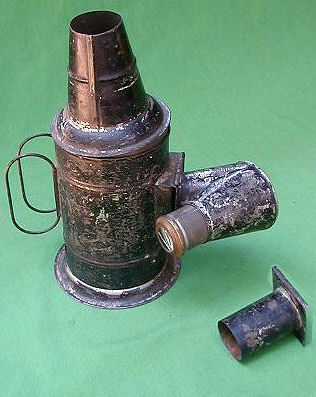 |
|
| For 25 cents extra a
Polyopticon Attachment could be obtained. This attachment changed the lantern into a
kind of episcope, for projection of opaque, paper items. By holding a picture on paper
against the open circular back of the attachment, the image could be projected on the screen. |
|
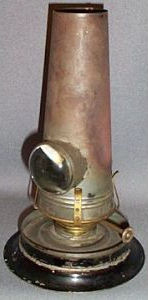
The Ideal
magic lantern was fitted with an oil burner, supplied with a metal chimney containing a
built-in condenser lens. The space between the lamp chimney and the metal of the lamp house
guaranteed a good isolation from the heat,
thus making the lantern safe for children's hands. |
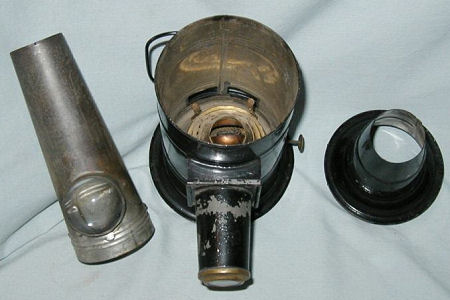 |
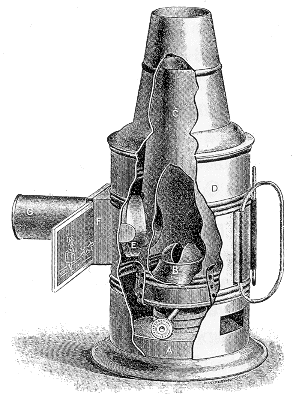 Exploded view that makes it clear how the lamp with internal chimney was placed in the magic lantern. Two handles on the back made it easy to place the body upon the base of the oil lamp. |
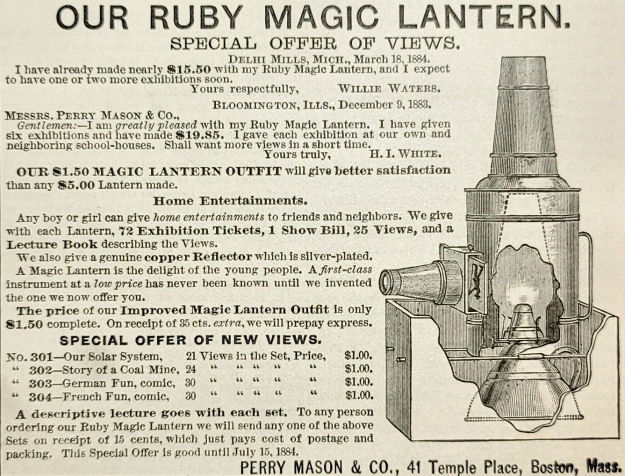 A similar-shaped model was 16 inches tall and was called 'Ruby'. |
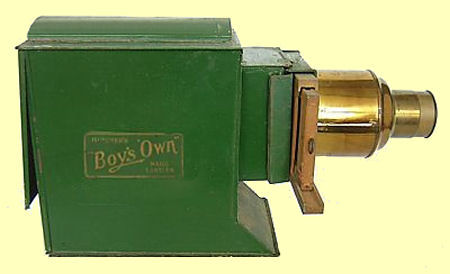 |
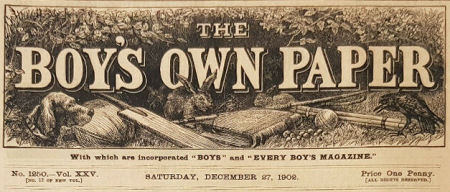 In the early years of the 20th century, the popular English magazine Boy's Own Paper brought out a special magic lantern too. |
| The prominent supplier of lanterns and slides W. Butcher & Sons supplied this lantern in three slightly different models. The metal bodies are painted green and carry a Boy's Own transfer on the side. | 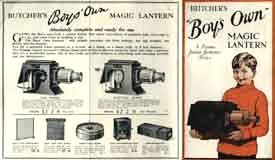 |
|
By the way, the American author Erle Stanley Gardner named his famous hero, the lawyer-detective Perry Mason, after this company, remembering the name from his childhood. Gardner wrote more then eighty novels about Perry Mason. Many stories were adapted for radio, television and motion pictures. |
 |
| |
©1997-2023 'de Luikerwaal' All rights reserved. Last update: 02-06-2023. |